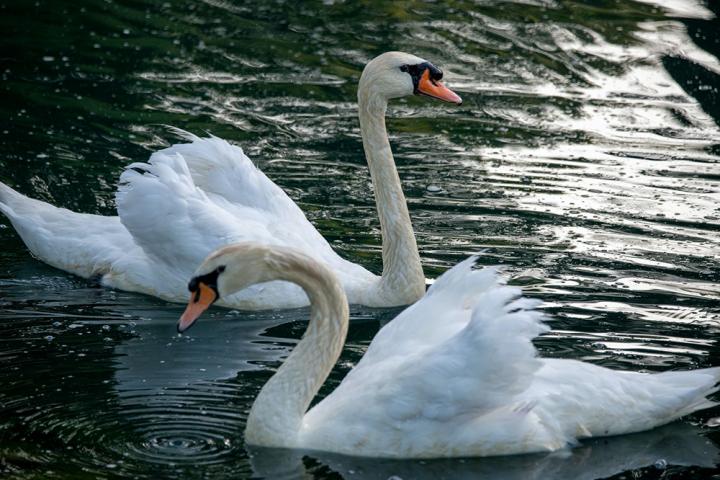Adaptability of bird flu poses threat to poultry
Insight into avian virus highlights its potential to infect commercial flocks.

Commercial poultry should be protected from the risk of contracting harmful bird flu from migrating flocks, research suggests.
New insights from a study of the 2016/17 bird flu outbreak show how highly pathogenic bird flu viruses – which are likely to cause deadly disease in chickens – can be transmitted from wild migrating bird populations to domestic flocks and back again.
These viruses can readily exchange genetic material with other low pathogenic viruses – which are less harmful – during migration, raising the likelihood of serious outbreaks in domestic poultry and wild birds, scientists have found.
Research led by a team including the Roslin Institute, representing the Global Consortium for H5N8 and Related Influenza Viruses, studied the genetic makeup of the 2016/17 bird flu virus in various birds at key stages during the flu season.
Their study offers insights into the outbreak strains, which originated in domestic birds in Asia before spreading via wild migratory flocks to create the largest bird flu epidemic in Europe to date.
Genetic analyses
The team interpreted genetic sequence data from virus samples collected during the outbreak together with details of where, when and in which bird species they originated.
Researchers used a computational technique, known as phylogenetic inference, to estimate when and where the virus exchanged genetic material with other viruses in wild or domestic birds.
The virus could easily exchange genetic material with other, less harmful viruses, at times and locations corresponding to bird migratory cycles, results showed. These included viruses carried by wild birds on intersecting migratory routes, and by farmed ducks in China and central Europe.
Migrating birds harbouring weaker viruses are more likely to survive their journey and potentially pass disease to domestic birds.
The research, published in Proceedings of the National Academy of Sciences, was carried out in collaboration with the Friedrich Loeffler Institut, Germany, the Erasmus University Medical Center, Netherlands, and the University of Edinburgh’s Usher Institute and Roslin Institute.
It was supported by funding from EU Horizon 2020, EPIC and BBSRC.
Bird flu viruses can readily exchange genetic material with other influenza viruses and this, in combination with repeated transmission of viruses between domestic and wild birds, means that a viral strain can emerge and persist in wild bird populations, which carries a high risk of disease for poultry. This aids our understanding of how a pathogenic avian flu virus could become established in wild bird populations.
** The Roslin Institute receives strategic investment funding from the Biotechnology and Biological Sciences Research Council and it is part of the University of Edinburgh’s Royal (Dick) School of Veterinary Studies. **
Related links
Imperfect vaccines limit spread of poultry disease
Test offers fast insight into chicken immunity
Image credit: Robert Woeger / Unsplash


